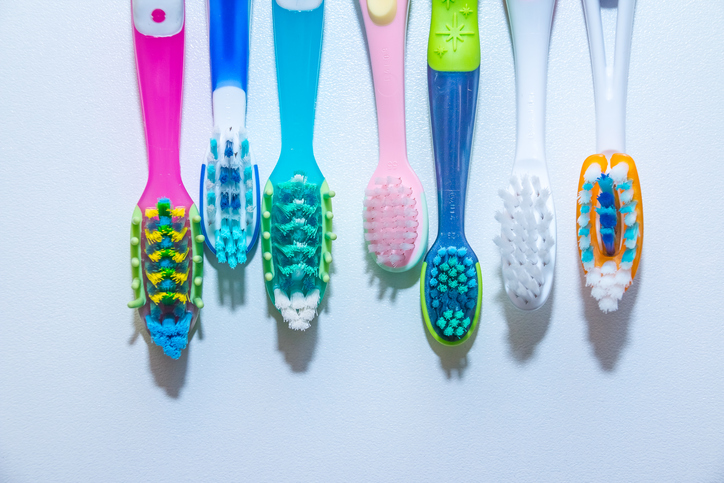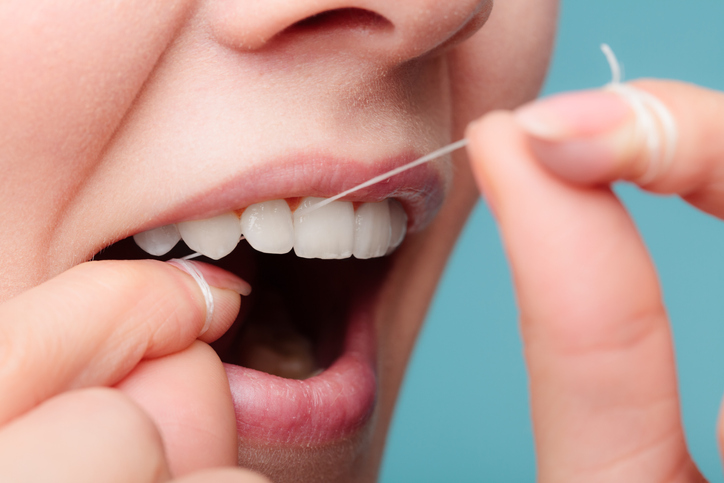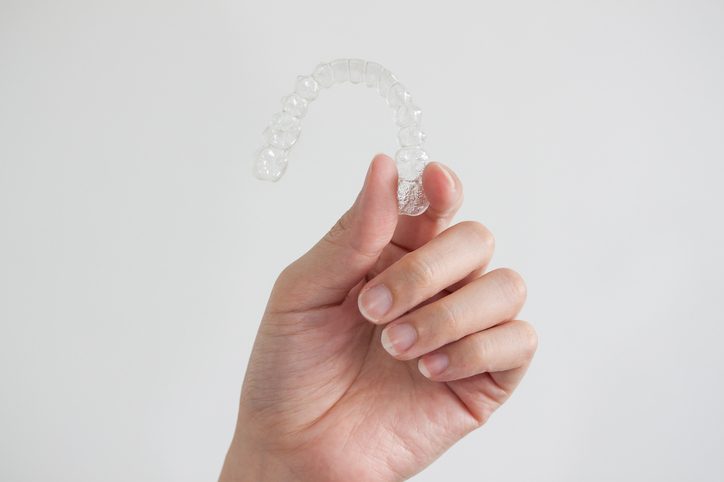-
Healthy Snack Ideas for Back to School

Eating a balanced diet can help you maintain a healthy waistline, but have you considered the effects food can have on your smile? As your kids prepare to go back to school, make sure their lunch boxes include tasty, mouth-healthy snacks. Here’s a look at what foods can help fight tooth decay and prevent cavities for healthy smiles during the coming school year.
Yogurt
If you’re used to including gelatin or pudding cups in your child’s lunchbox, switch to something similar but much healthier. Yogurt is a dairy product with tooth-strengthening calcium and potassium. This and other types of dairy, including milk and cheese, are known to neutralize the acids in your mouth to help prevent enamel erosion. Yogurt also contains probiotics that promote healthy gums and help mouth sores heal faster.
Pita Chips and Dip
Instead of greasy potato chips, encourage your kids to eat pita chips, a healthier alternative for your teeth and body. This snack tastes delicious when served with hummus, guacamole, or yogurt-based chip dip.
Fresh Fruit
It’s quick and easy to grab fruit snacks off the pantry shelf, but fresh fruit is significantly healthier. It contains vitamins, fiber, and other nutrients, and it doesn’t stick to your child’s teeth. The concentrated sugar in fruit snacks attracts bacteria and promotes cavities, while crunchy fruit such as apples and Asian pears serve as natural toothbrushes. While any fruit can make a healthy snack, consider avoiding citrusy oranges and grapefruit because of their high acid content.
Fresh Vegetables
Similar to some fresh fruits, fresh veggies such as carrots and bell peppers scrub your teeth as you chew them. They’re also packed with nutrients. Dark leafy greens including spinach and kale also contain calcium for strong teeth, plus folic acid that may help treat gum disease. Include these in salads for your kids to take to school, or blend them into smoothies for after-school snacks.
Nuts and Seeds
Almonds and sunflower seeds are easy to include in your kids’ school lunches. They are a good source of calcium and protein while also being low in sugar. Plus, unlike starchy pretzels or crackers, they are less likely to linger in the grooves of your teeth.
Lean Protein
Hardboiled eggs, tuna fish, and all-natural chicken or turkey lunch meat are healthy additions to your children’s school lunches. These lean sources of protein are also high in phosphorus, which is good for strong teeth.
Flavored Water
If your child is accustomed to drinking juice or soda at lunch, break that habit this school year. Sugary drinks eat away at tooth enamel and fill you up with empty calories. Plain water is ideal, but naturally flavored, sugar-free water is the next best thing.
Eating a healthy diet is an effective way to help prevent cavities. For other preventative dental care, such as tooth cleanings and oral exams, please contact Glenwood Premier Dental at (732) 264-4477 today. Our dentist in Hazlet can help your family achieve a lifetime of healthy smiles!
-
How to Select the Right Toothbrush

With so many styles and brands of toothbrushes to choose from, you may wonder if you’re using the best one for your teeth and gums. Flexible necks, pointed bristles, non-slip handles—which feature is best for you? This guide will help you shop with confidence the next time you replace your toothbrush.
Selecting the Right Toothbrush
First, look for a toothbrush with soft bristles. You should find this labeled on the packaging. Most people benefit from using soft bristles because they are gentle on teeth. Hard bristles can wear down tooth enamel and irritate the gums, causing them to recede.
Then, choose a toothbrush with a small head. This makes it easier to reach all the surfaces of your teeth, including behind your back molars.
Other features—such as the type of handle, shape of the head, and style of the bristles—come down to personal preference. Manufacturers may tout one as being better than another, but it simply depends on which one fits your mouth comfortably and allows you to brush your teeth effectively.
How Often to Replace Your Toothbrush
You should buy a new toothbrush every three months, or when the bristles start to appear frayed. Also, plan to replace your toothbrush after being sick. The bristles can collect germs that could cause you to become ill again if you continue using the same toothbrush. For this reason, it’s wise to keep a backup toothbrush or two in your medicine cabinet.
What About Electric Toothbrushes?
While a manual toothbrush gets the job done, you may want to consider upgrading to an electric toothbrush. A 2014 Cochrane study found that the increased speed at which electric toothbrushes operate allow them to remove 21 percent more plaque after three months of use for an 11 percent reduction in gingivitis cases.
A powered toothbrush also makes oral care easier for children and people with arthritis or braces. Many powered toothbrushes have built-in timers to make sure you brush for the recommended 30 seconds per quadrant, or two minutes total.
The next question you might have is what type of electric toothbrush to use. The bristles may clean by vibrating or oscillating; there may be a pressure sensor or different cleaning modes; and displays or timers may aid in the effectiveness of your brushing. As with manual toothbrushes, the options seem endless. The choice you make comes down to preference and any personalized advice you receive from your dentist.
If you decide to switch to an electric toothbrush, keep in mind that the recommended timeline for replacing the head still applies—that is, you should use a new toothbrush head once every three months or when the bristles start to deteriorate, whichever comes first.
If you’re still undecided about which toothbrush to use, consult our Hazlet dentist. We’ll recommend the best products to help your family achieve a lifetime of healthy smiles! For more tooth brushing tips, or to schedule preventative dental care, please contact Glenwood Premier Dental at (732) 264-4477 today.
-
The Importance of Regular Dental Cleanings

There’s no denying the importance of daily at-home oral care. Brushing, flossing, and avoiding sugary candy and drinks play a pivotal role in keeping your teeth and gums healthy. However, these things aren’t enough. To keep your smile looking bright, you also need regular dental cleanings. Here’s how you benefit from visiting the dentist twice a year.
Prevent Cavities
Plaque is your teeth’s worst enemy. This sticky, white film forms on your teeth every day. You remove most of it when you brush and floss, but some plaque invariably remains behind. This acidic substance eats away at tooth enamel and can lead to cavities. Professional cleanings remove residual plaque and help protect your smile for the next six months.
Lower Your Risk of Gum Disease
Plaque doesn’t just harm your teeth—it can also harden into tartar or calculus along the gum line, which irritates your gums and causes them to become red and inflamed. Tartar can only be removed by a dentist using professional cleaning tools and techniques. Doing so every six months is the key to keeping gum disease at bay.
Preserve Your Teeth
Cavities are a primary cause of tooth loss. Even if you can save the tooth with a filling or root canal, it’s never quite the same again. Gum disease also causes tooth loss. Advanced cases affect not only your gums but the bone that supports your teeth as well. If left untreated, your teeth could loosen and fall out. Good oral hygiene, including having regular cleanings, can prevent this.
Brighten Your Smile
Daily habits such as drinking coffee, tea, or wine and using tobacco can leave surface stains on your teeth. Dental cleaning and polishing remove these stains to help you smile with greater confidence.
Freshen Your Breath
Even if you brush and floss every day, plaque, tartar, and bacteria can still cling to your teeth. After six months, your mouth may start to feel a little less clean, even with proper at-home oral care. Professional dental cleaning is a great way to keep your mouth smelling fresh.
Promote Good Overall Health
When problems occur in your mouth, the effects can be seen throughout your body. Gum disease is associated with diabetes, heart disease, and stroke. Take good care of your mouth, and you may help keep these conditions at bay.
Save Money on Restorative Procedures
Preventative dentistry is convenient and affordable. If you have dental insurance, cleanings may even be free! It’s much more cost-effective to visit the dentist every six months for cleanings—and therefore keep gum disease, cavities, and other tooth problems at bay—than it is to skip cleanings and have to undergo restorative procedures as a result. Save money and protect your health with regular teeth cleanings!
Our goal at Glenwood Premier Dental is to keep your mouth healthy with preventative dentistry services. When that’s not possible, we can repair your smile with restorative dentistry. Find out more about these services—contact our Hazlet dentist at (732) 264-4477 today!
-
Invisalign 101: What to Expect

Do you have crooked teeth or a misaligned bite? You may be interested in straightening your smile for a boost in your self-esteem. If dislike the idea of having metal brackets and wires in your mouth, Invisalign could be the solution you’re looking for!
Over the past 20+ years since Invisalign first became available, over six million people worldwide have straightened their teeth using this technology. The aligners are made of BPA-free, medical-grade, FDA-approval thermoplastic for your health and safety. Learn a little more about what to expect if you use Invisalign to straighten your teeth.
How Invisalign Works
The process begins with a consultation at your dentist’s office. X-rays, photos, and an impression of your teeth are transferred to an advanced computer system that digitally maps out the exact movements needed to straighten your smile.
Invisalign comes in a series of custom-fit upper and lower aligners, which you wear for one to two weeks at a time until your teeth have achieved their desired positions. Treatment typically takes nine to 15 months. During that time, you may need to visit your dentist every four to six weeks to ensure things are progressing nicely.
The Cost of Invisalign
For most patients, Invisalign costs about the same as traditional braces. The exact treatment price depends on the complexity of your case and your insurance coverage. Financing options help make Invisalign affordable, no matter your situation.
What it’s Like to Wear Invisalign Aligners
The thin, smooth aligners should fit comfortably over your teeth. You may feel temporary discomfort for the first few days of wearing each new aligner as it applies gentle force to slowly shift your teeth. Over-the-counter painkillers are usually an effective treatment. If a new aligner irritates your gums, your dentist can shave down the plastic to help it fit better.
Invisalign aligners are made of clear plastic, so they’re virtually invisible. Most people won’t be able to tell you’re wearing them! Still, you can remove the aligners for special occasions, such as class pictures, weddings, and job interviews. You can also take them out to eat, chew gum, or play woodwind instruments, so they have a minimal effect on your daily life. Just make sure you wear the aligners for 20 to 22 hours each day to prevent delaying the results.
Completing Your Invisalign Treatment
Once you finish wearing all the aligners in the series, your dentist may recommend using a retainer to prevent your teeth from shifting out of position. Different types of retainers are available, but you can get one that looks just like an Invisalign aligner that is designed to last for years. You may need to wear the first set of retainers full-time and gradually shift to wearing them only at night.
Glenwood Premier Dental offers Invisalign treatment for patients ranging from teens to older adults. It’s the perfect option for straightening your teeth without traditional braces! To schedule an Invisalign consultation with our Hazlet dentist, please contact us at (732) 264-4477 today.
